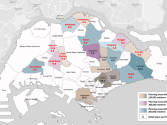Why it's high time for microfinance to become mainstream
By Moorad Choudhry“Microfinance” has been one of the great success stories of finance in the developing world. It’s something that the Western world could learn from. Yes we have Credit Unions, but their share of the market is tiny, and they don’t have an impact on the lower-income sector of the population in any meaningful way.
It is worthy of much more study how in emerging economies microfinance has helped transform society. Perhaps the best, and certainly the best-known, example is Grameen Bank in Bangladesh, which earned its founder Professor Muhammad Yunus a Nobel Prize and which was the driving force behind the economic empowerment of thousands of rural poor, and particularly poor women.
It enabled them to set up their own businesses and break out of the cycle of poverty. Microfinance, or“microcredit”, is a proven business model.
The urban and rural poor, which in developing economies are a significant share of the population, are often unable to access mainstream banking facilities because of poor credit history and/or unemployed status, are not generally in need of large-size loans for long-term periods. Often the need is for a small size loan, the equivalent of USD 100.00 or less, and for only a short period of time (say, 3-6 weeks).
Mainstream banks, even where the customer is considered an acceptable credit risk, do not offer such facilities.
That’s a pity. The microfinance loan is a legitimate and customer-friendly product. This segment of the loan market is a viable business proposition. We conclude this from observing, all around the world, how institutions such as Credit Unions suffer from loan default rates that are not significantly higher than prime corporate loan books.
The requirements of the business model itself are not beyond a bank’s operational capabilities. As well as default rates amongst this customer franchise being not much higher than the prime lending market, banks also have an IT suite and other operational capabilities for high-volume product that make them natural providers of micro-credit loans.
Obviously the key to banks being seen as providers of choice for consumers would be a lowinterest rate, but this is also not something that is beyond a bank to offer.
And this is where a bank’s existing size and balance sheet strength comes in. Banks can afford to make a lower return on capital (RoC) than more specialised lenders like pay-day lenders, because it wouldn’t be their primary line of business.
The risk-weighted asset value will be material, but microfinance would be a small part of the balance sheet overall. The aggregate increase in regulatory capital requirement should not be unbearable. So this asset class is not unviable for banks.
But above all, it would be a valuable service to society. Banks represent the communities they serve. It isn’t in their – or society’s – interest for there to be a significant percentage of the community that is “non-banked” and is locked out of basic banking services.
By taking microfinance into the mainstream, banks achieve one of those rare things in business: a genuine win-win.
























 Advertise
Advertise










